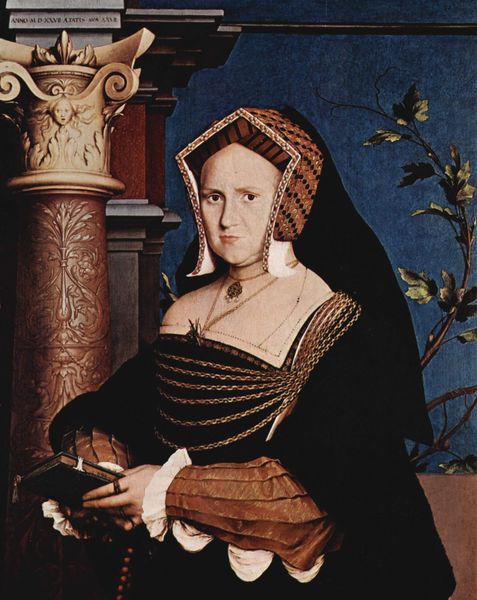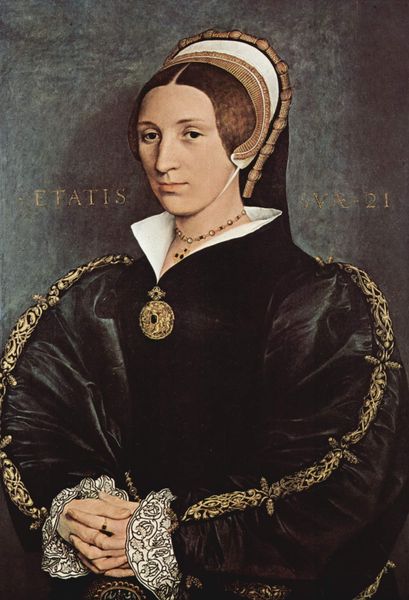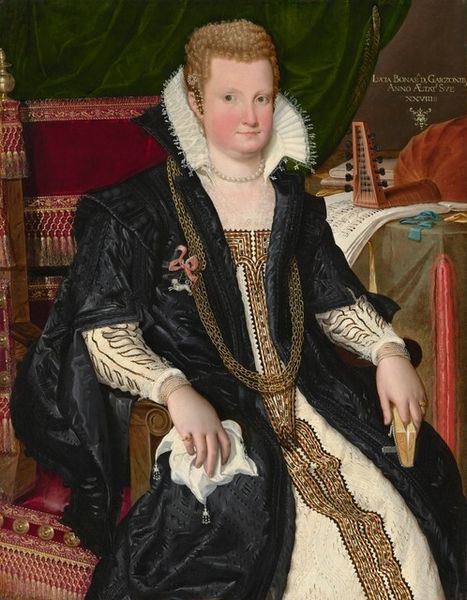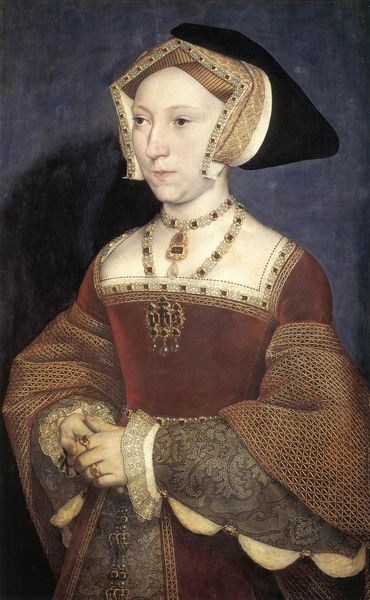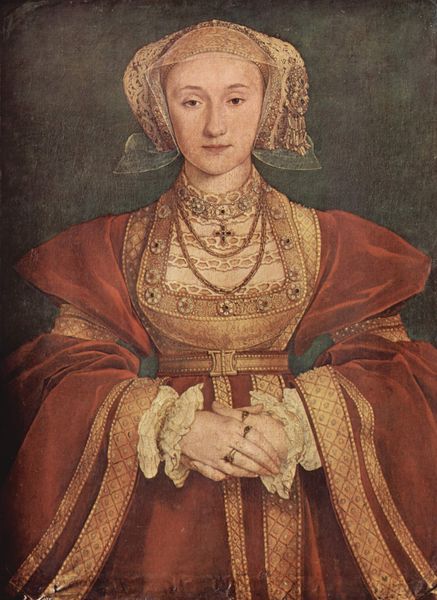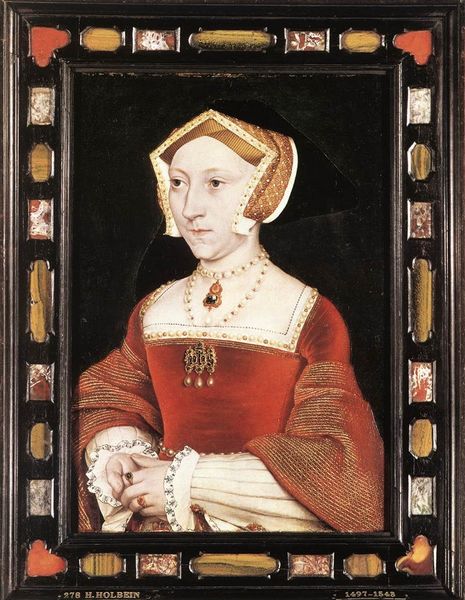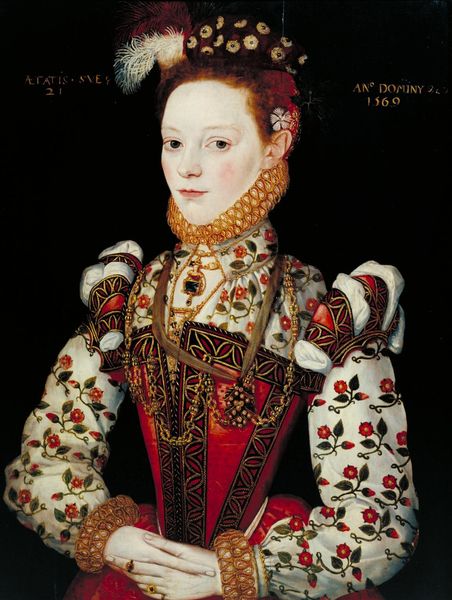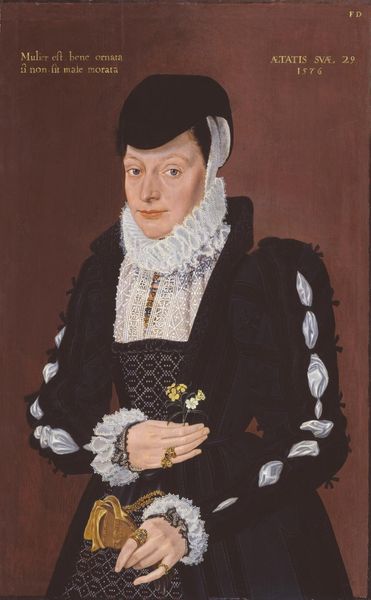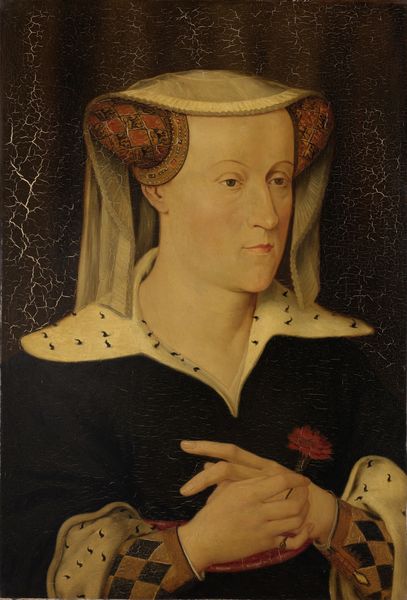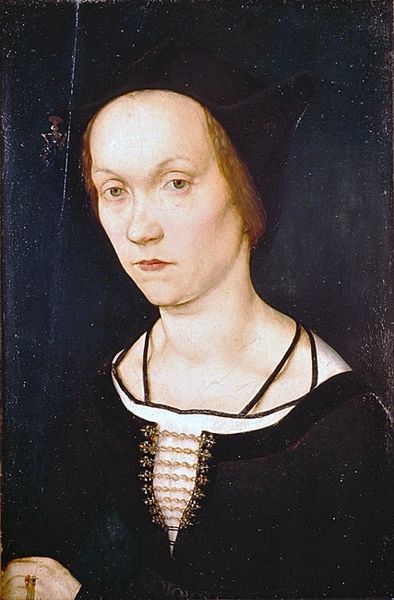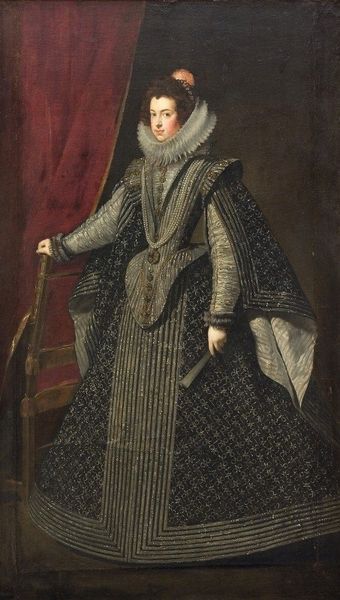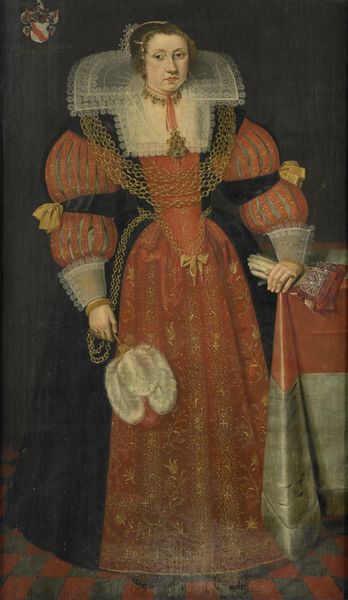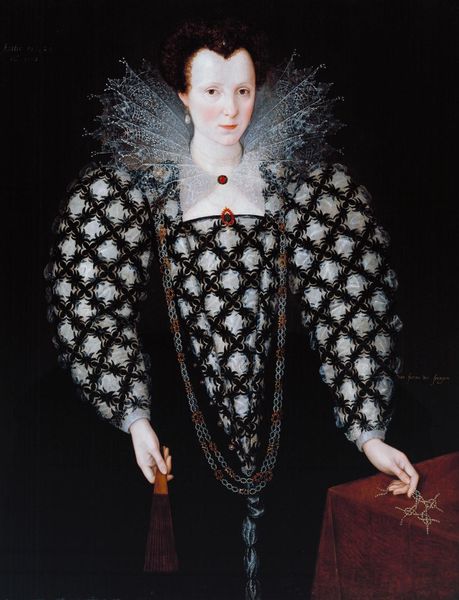
painting, oil-paint
#
portrait
#
painting
#
oil-paint
#
northern-renaissance
#
lady
#
realism
Dimensions: 42.5 x 32.7 cm
Copyright: Public domain
Curator: Here we have Hans Holbein the Younger’s "Portrait of Margaret Wyatt, Lady Lee," painted around 1540. Editor: My first thought is the sheer restraint in this piece. Despite the obvious wealth suggested by her garments and jewelry, there's a quietness, almost austerity to it. Curator: Indeed. The painting serves as a window into the social conventions surrounding portraiture of the time, especially for women of noble standing. Note how Holbein uses oil paint to meticulously capture the texture of Lady Lee’s damask gown and the delicate pearl embellishments. Consider the cost and labor invested in such detail! Editor: The materials are certainly telling. This wasn’t just a simple likeness; it was a calculated display of status and piety meant for public consumption. The crisp lines and controlled palette add to the sense of formality and power, projecting her place in the Elizabethan social order. Curator: Absolutely, the details surrounding production really enhance our view of art consumption in this era. These portraits functioned much like visual proclamations within the aristocratic families of the time, reflecting carefully crafted identities. Editor: I see your point. Also the contrast with portraits of Henry VIII. He has such forceful swagger and Lady Lee has restrained presence. Did Lady Lee have a say on this portrait or was her image just handled by Holbein as if it was simply raw materials for the social message? Curator: That is certainly open to question. We can however analyze Holbein’s choices. I'd argue it does tell a broader story of patronage and artistic intention in a period defined by upheaval and Reformation. The work provides insight into what was important for those with money and their cultural identity. Editor: And to those for whom display was an inherent part of power, it shows us how they chose to be perceived. Food for thought.
Comments
No comments
Be the first to comment and join the conversation on the ultimate creative platform.
